
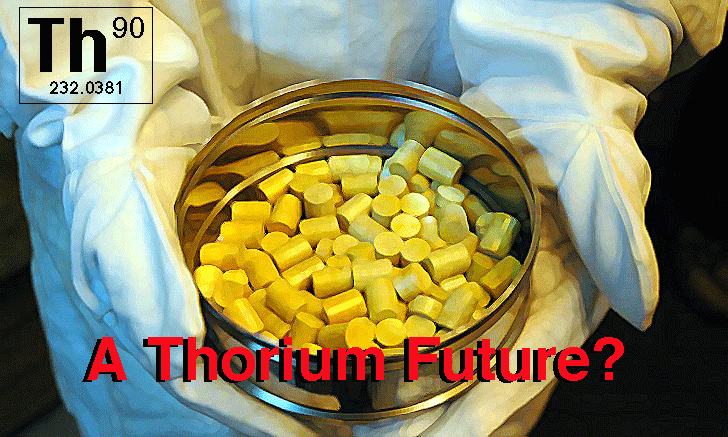
by Gary Vey
I've been writing stories for viewzone for fifteen years now. I thought I had researched almost all of the worst conspiracies and repressed historical events, and there have been some real whoppers, but the one I am going to tell you about now is the most sad and historically relevant -- one that surely effects every human alive today.
What follows is not a conspiracy theory. It's all true. And while some of the information I am going to give is simplified, the claims and validity of the facts are nonetheless solid.
I am about to tell you that the kind of dangerous nuclear reactors that we have almost everywhere -- the kind that exploded in Chernobyl and Fukushima -- is just one possible way to use radioactive elements as a fuel. Shortly after the end of WWII scientists were still fixated on Uranium and Plutonium -- a direct result of the Manhattan Project. Huge investments were made in this form of nuclear energy. But in the early 60s a newer, safer, cheaper form of nuclear energy production was discovered then abandoned. It's not even taught in Nuclear Physics courses. It's a fuel that you have likely never heard of before. But that could change.
The Big Mistake
Following the development of the first nuclear bomb at the close of WWII, physicists were applying their knowledge of radioactivity to civilian use, chiefly for the production of electricity. Since the nuclear bombs used Uranium and Plutonium as their explosive fuel, scientists naturally experimented with these same materials, causing a controlled chain reaction that produced heat that created steam and turned an electric generator.
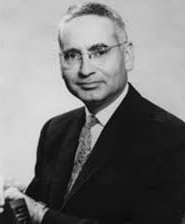 Most of this research was done at the Oak Ridge National Laboratory. A nuclear physicist named Alvin Weinberg [right] was working at ORNL during the Manhattan Project (which made the first two nuclear bombs), and later became Director of the Laboratory in the early 1950s. He holds the patent for the Light Water reactors like the one's at Fukushima. He continued to make new discoveries and innovations in the fields of nuclear reactors until he was fired by President Richard Nixon. The reason will make you cringe.
Most of this research was done at the Oak Ridge National Laboratory. A nuclear physicist named Alvin Weinberg [right] was working at ORNL during the Manhattan Project (which made the first two nuclear bombs), and later became Director of the Laboratory in the early 1950s. He holds the patent for the Light Water reactors like the one's at Fukushima. He continued to make new discoveries and innovations in the fields of nuclear reactors until he was fired by President Richard Nixon. The reason will make you cringe.
Safety Concerns & Inevitable Disasters
Weinberg's experiments with radioactive elements revealed the dangers inherent in Uranium and Plutonium fuels -- things like explosions, meltdowns and radioactive contamination -- disasters that would be inevitable. Not only do these solid fuels require constant attention by alert and experienced engineers but the waste material is highly radioactive and needs to be stored and attended to by someone for the next 250,000 years!
Weinberg wasn't just critical of Uranium fueled reactors, he had discovered an alternative fuel that was safer and more efficient. In fact it was so "safe" that Nixon fired Weinberg and cut all funding for liquid fuel research lest it deter the chosen path of Uranium. What is this fuel you have likely never heard of before? It's Thorium.
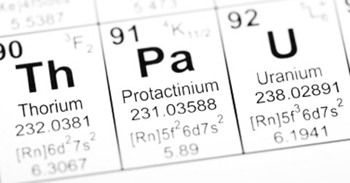 Thorium
Thorium
Thorium is a naturally occurring radioactive chemical element with the symbol Th and atomic number 90. It was discovered in 1828 by the Swedish chemist Jons Jakob Berzelius and named after Thor, the Norse god of thunder. In nature, virtually all thorium is found as thorium-232, which undergoes alpha decay with a half-life of about 14.05 billion years. Other, trace-level isotopes of thorium are short-lived intermediates of decay chains. Thorium is estimated to be about four times more abundant than uranium in the Earth's crust, and is chiefly refined from monazite sands as a by-product of extracting rare earth metals. Thorium was once commonly used as the light source in gas mantles and as an alloying material, but these applications have declined due to concerns about its radioactivity. Thorium is also used as an alloying element in non consumable TIG welding electrodes. |
The Molten Salt Reactor
In the early 60s Weinberg made a significant discovery. Instead of solid Uranium fuel rods causing a chain reaction in a pressurized containment vessel, he achieved the same chain reaction with the Thorium fuel suspended in a salt solution. Called a Molten Salt Reactor, the liquid fuel undergoes a chain reaction and generates heats, then is pumped through a heat exchange where it eventually boils water, makes steam and turns a turbine.
|
The Molten Salt Thorium Reactor: How It Works:
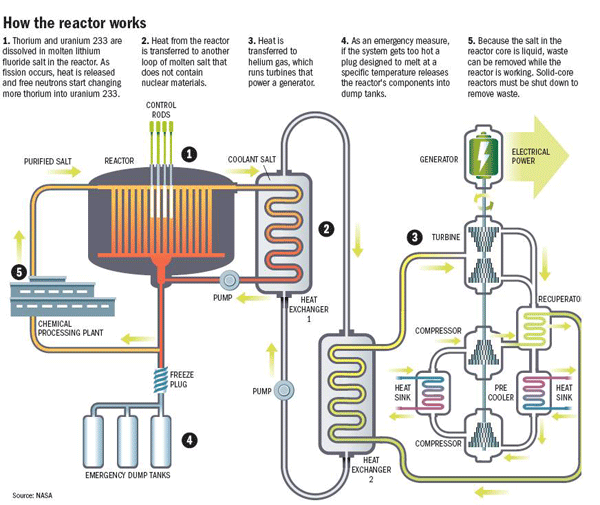
There is a central core 1 of Uranium that generates neutrons. It's not enough to cause a chain reaction, but that will come soon. Initially you have to "start" the reactor with Uranium but after it gets up and running, you can make your own Uranium for the core and feed it back in. It's called a "breeder" reactor because it breeds its own fuel. The Uranium in the core bombards the surrounding Thorium-232, which is in the heated fluoride salt (orange color). This fluid is kept circulating through a heat exchange 2 and, as it is moving, the neutrons are changing the Thorium-232 to Thorium-233 to Protactinium-233 and then to Uranium-233. At this point the Uranium-233 fissions, releasing heat energy and more neutrons which can strike Thorium-232 and start the whole cycle again and again -- as long as the neutron source is hitting the Thorium Fluoride fuel.
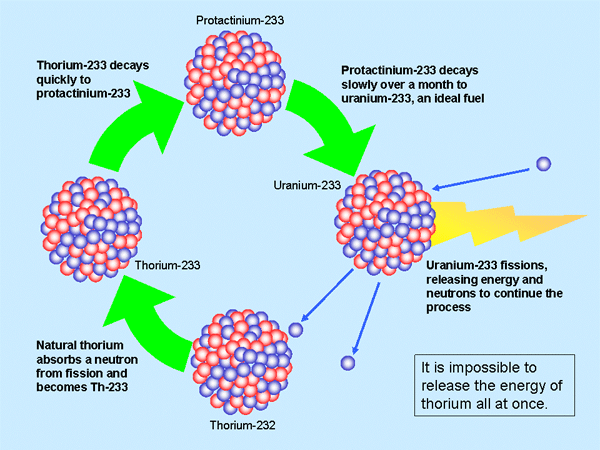 This cycle does not require a pressurized containment vessel and there is no way that the reactor can "run away" from operators or melt down, as we saw in Chernobyl and Fukushima. Because Thorium becomes a solid at room temperature, the reactor will automatically shut itself off if there is a loss of power or if the temperature gets too hot by way of a "freeze plug" 4. A plug is made at the bottom of the Thorium fuel tank by allowing the Thorium fluid to cool to room temperature and solidify. A small fan or refrigeration unit keeps the plug intact. If electrical power is shut off the plug will heat up and become fluid, allowing the entire Thorium fuel to safely drain to holding tanks. Another feature of the Thorium Reactor is that it can be refueled while it is running. Usually this means adding more Thorium to the salt. Thorium is only an alpha source and the radiation will not penetrate the skin. But precautions must be taken to avoid ingestion or inhalation. After the reactor is running, some of the active Thorium fuel is siphoned off and chemically separated to remove the Uranium-233 and other "waste" products. Since the Uranium-233 can be used to fuel the core it really is not waste at all. The actual waste material is very small and needs to be kept safe for only 500 years. The typical Uranium-Plutonium reactor waste must be kept safe for 250,000 years! Thorium fuel requires no processing. It is used in its natural form and it is 100% consumed by the reactor. Uranium fuel requires extensive enrichment processes -- like what Iran is attempting to do now -- and ultimately uses only 0.7% of the original Uranium ore. There is an estimated 1000 years supply of the known Thorium reserves around the globe. It is as common in the Earth's crust as Lead -- about 6 parts per million on average. India has 25% of the world's Thorium and they are developing a Thorium Reactor at Kakrapar which will be operational in 2013. Australia has considered using their reserves of Thorium by building Thorium Reactors in proportion to conventional Uranium-Plutonium reactors, 1:3, taking advantage of Thorium's waste-eating capabilities.
|
Thorium's Big Flaw: It's Not Good for Making Bombs
Perhaps it is unfair to blame President Richard Nixon for the abrupt termination of Thorium research in favor of the Uranium-Plutonium reactors. The momentum of money from investments in mining and processing, actual contracts to build reactors and use the fuel for nuclear weapons -- it all became too hard to stop. Anyone who posed a threat to the profit stream was silenced. Dr. Weinberg, who developed and holds the patent for the Uranium-Plutonium reactors we use today (i.e. Fukushima), was fired from Oak Ridge National Laboratory after 18 years by Nixon because he found a better, safer and cheaper way to generate nuclear power. Odd, isn't it?
While it is relatively easy to separate the Uranium-233 that is "artificially" made in the reaction process, it is contaminated with the gamma emitter Uranium-232, and cannot be further separated. The gamma ray signature of U-232 makes it virtually impossible to work with. Gamma radiation can penetrate lead shielding. Luckily, both U-232 and U-233 can be re-introduced to the Thorium Reactor and burned as fuel.
Critics focus on the U-232 as a major hurtle to overcome.
"This isotope is more hazardous than the U-235 used in conventional reactors, he adds, because it produces U-232 as a side effect (half life: 160,000 years), on top of familiar fission by-products such as technetium-99 (half life: up to 300,000 years) and iodine-129 (half life: 15.7 million years). Add in actinides such as protactinium-231 (half life: 33,000 years) and it soon becomes apparent that thorium's superficial cleanliness will still depend on digging some pretty deep holes to bury the highly radioactive waste."
--[source]
Thorium Reactor proponents claim that these problems can and have been overcome in experimental Molten Salt Reactors and that funding for technological solutions would overcome these challenges. The corrosive effect of the molten salt fuel on the pipes and pumps used to circulate it is also something that needs to be addressed. Such problems, they say, are inherent in any new breakthrough.
It's still an alternative!
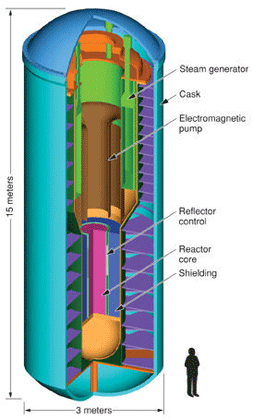 Before I knew about the Thorium Reactor I thought we were between a rock and a hard place. Nuclear power stations are old and the process is dangerous and full of hidden costs, yet we need ever increasing amounts to sustain our civilization and life. I didn't know that this technology existed and that it had been suppressed because of politics and profit.
Before I knew about the Thorium Reactor I thought we were between a rock and a hard place. Nuclear power stations are old and the process is dangerous and full of hidden costs, yet we need ever increasing amounts to sustain our civilization and life. I didn't know that this technology existed and that it had been suppressed because of politics and profit.
There are growing numbers of scientists who are lecturing and promoting Thorium Reactors. There are designs for portable units -- some as small as a bus -- that are completely self-contained and could be mass produced and installed near to where the power is needed. This decentralized power network would eliminate the need for miles of inefficient power lines, making electricity accessible to developing countries. These small power generators could literally change the fate of millions of people. Desalination plants could irrigate arid regions and provide food... the potential is unlimited.
[Right:] Lawrence Livermore, Los Alamos, and Argonne national laboratories are designing a self-contained nuclear reactor with tamper-resistant features. Called SSTAR (small, sealed, transportable, autonomous reactor), this next-generation reactor will produce 10 to 100 megawatts electric and can be safely transported on ship or by a heavy-haul transport truck. In this schematic of one conceptual design being considered, the reactor is enclosed in a transportation cask.
Because thorium reactors present no proliferation risk, and because they solve the safety problems associated with earlier reactors, they will be able to use reasonable rather than obsessive standards for security and reliability. If we can reach the $145-in-1971-dollars/kW milestone experienced by Commonwealth Edison in 1971, we can decrease costs for a 1-gigawatt plant to at most $780 million, rather than the $1,100 million to build such a plant today. In fact, you might be able to go as low as $220 million or below, if 80% of reactor costs truly are attributable to expensive anti-meltdown measures. A thorium reactor does not, in fact, need a containment wall. Putting the reactor vessel in a standard industrial building is sufficient.[source]
Check this out. It's a well done video with Kirk Sorenson that explains, in simple language, more of the technical stuff about Thorium. It's a bit long, but you will learn a lot in the first five minutes.
The story below shows that there is still a spark of interest in this safe nuclear technology. Can things possibly change? Is there a Thorium future?
|
U.S. partners with China on Thorium reactor technology
By Mark Halper | June 26, 2012 [Source]
DOE's assistant secretary for nuclear energy Peter Lyons is co-chairing the partnership's executive committee, along with Jiang Mianheng from the Chinese Academy of Sciences (CAS), according to a March presentation by CAS on thorium molten salt reactors. Beijing-based CAS is a state group overseeing about 100 research institutes. It and the DOE have established what CAS calls the "CAS and DOE Nuclear Energy Cooperation Memorandum of Understanding." [...] Proponents of thorium MSRs, also known as liquid thorium reactors or sometimes as liquid fluoride thorium reactors (LFTRs), say the devices beat conventional solid fuel uranium reactors in all aspects including safety, efficiency, waste and peaceful implications. Among the claimed benefits: thorium waste cannot be easily shaped into a bomb; the waste lasts only hundreds of years rather than tens of thousands for uranium; thorium in liquid form burns more efficiently than solid uranium; liquid thorium reactors do not operate at dangerous high pressure; liquid thorium reactors cannot melt down. [...] One reason for China's interest in thorium: It has an ample supply of the substance, which occurs in monazite, a mineral that also contains rare earths, the metals that are vital across industries ranging from missiles to wind turbines to iPods. China, which dominates the world's rare earth market, is believed to be sitting on substantial stockpiles of thorium that it has already extracted from the rare earths that it has mined and processed. [...] What's not clear is what, exactly, the U.S. will get from the collaboration. While China has declared an interest in building thorium reactors -- including CAS' January 2011 approval of a TMSR project -- the U.S. has not. The partnership with China suggests that the U.S. acknowledges a possible role for thorium in its energy future. |
The Future?
If developers are right, Thorium fueled, molten salt reactors could be manufactured in fully automated "pods" that would be air-lifted to remote locations and set up to supply electrical power for desalinization of sea water, allowing arid lands to be irrigated and inhabited. Since there is no danger of a meltdown or explosion, the reactors would only require refueling occasionally with raw Thorium.
As I write this story, confirmation of the Higgs Boson and -- even more important -- the Higgs Field is a quantum leap that will reveal something beyond nuclear fuel as we know it today. Someday, perhaps, nuclear energy will be an obsolete method of creating electrical power.
UPDATE: China Blazes Trail for Thorium
By Ambrose Evans-Pritchard
China blazes trail for 'clean' nuclear power from thorium The Chinese are running away with thorium energy, sharpening a global race for the prize of clean, cheap, and safe nuclear power. Good luck to them. They may do us all a favour.
Dr Rubbia says a tonne of the silvery metal produces as much energy as 200 tonnes of uranium, or 3,500,000 tonnes of coal Mr Jiang estimates that China has enough thorium to power its electricity needs for "20,000 years".
Princeling Jiang Mianheng, son of former leader Jiang Zemin, is spearheading a project for China's National Academy of Sciences with a start-up budget of $350m.
He has already recruited 140 PhD scientists, working full-time on thorium power at the Shanghai Institute of Nuclear and Applied Physics. He will have 750 staff by 2015.
The aim is to break free of the archaic pressurized-water reactors fueled by uranium -- originally designed for US submarines in the 1950s -- opting instead for new generation of thorium reactors that produce far less toxic waste and cannot blow their top like Fukushima.
"China is the country to watch," said Baroness Bryony Worthington, head of the All-Parliamentary Group on Thorium Energy, who visited the Shanghai operations recently with a team from Britain's National Nuclear Laboratory.
"They are really going for it, and have talented researchers. This could lead to a massive break-through."
The thorium story is by now well-known. Enthusiasts think it could be the transforming technology needed to drive the industrial revolutions of Asia -- and to avoid an almighty energy crunch as an extra two billion people climb the ladder to western lifestyles.
At the least, it could do for nuclear power what shale fracking has done for natural gas -- but on a bigger scale, for much longer, perhaps more cheaply, and with near zero CO2 emissions.
The Chinese are leading the charge, but they are not alone. Norway's Thor Energy began a four-year test last month with Japan's Toshiba-Westinghouse to see whether they could use thorium at Norway's conventional Halden reactor in Oslo.
The Japanese are keen to go further, knowing they have to come up with something radically new to regain public trust and save their nuclear industry.
Japan's International Institute for Advanced Studies (IIAS) -- now led by thorium enthusiast Takashi Kamei -- is researching molten salt reactors that use liquid fuel.
Is this what Premier Shinzo Abe meant when he revealed before Christmas that he planned to relaunch nuclear power in Japan with "entirely different" technology? We will find out.
The Chinese aim to beat them to it. Technology for the molten salt process already exists. The Oak Ridge National Laboratory in Tennessee built such a reactor in the 1960s. It was shelved by the Nixon Administration. The Pentagon needed plutonium residue from uranium to build nuclear bombs. The imperatives of the Cold War prevailed.
The thorium blueprints gathered dust in the archives until retrieved and published by former Nasa engineer Kirk Sorensen. The US largely ignored him: China did not. Mr Jiang visited the Oak Ridge labs and obtained the designs after reading an article in the American Scientist two years ago extolling thorium. His team concluded that a molten salt reactor -- if done the right way -- may answer China's prayers.
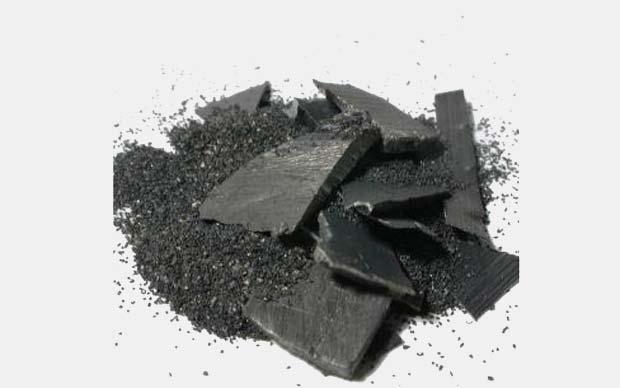
Mr Jiang says China's energy shortage is becoming "scary" and will soon pose a threat to national security. It is no secret what he means. Escalating disputes with with India, Vietnam, the Philippines, and above all Japan, are quickly becoming the biggest threat to world peace. It is a resource race compounded by a geo-strategic struggle, with echoes of the 1930s.
His mission is to do something about China's Achilles Heel very fast. The Shanghai team plans to build a tiny 2 MW plant using liquid flouride fuel by the end of the decade, before scaling up to commercially viable size over the 2020s. It is also working on a pebble-back reactor.
He estimates that China has enough thorium to power its electricity needs for "20,000 years". So does the world. The radioactive mineral is scattered across Britain. The Americans have buried tonnes of it, a hazardous by-product of rare earth metal mining.
China is already building 26 conventional reactors by 2015, with a further 51 planned, and 120 in the pipeline, but these have all the known drawbacks, and rely on imported uranium.
The beauty of thorium is that you cannot have a Fukushima disaster. Professor Robert Cywinksi from Huddersfield University, who anchor's the UK's thorium research network ThorEA, said the metal must be bombarded with neutrons to drive the process. "There is no chain reaction. Fission dies the moment you switch off the photon beam," he said.
His team is working on an accelerator driven subcritical reactor. "People are beginning to realize that uranium isn't sustainable. We're going to have to breed new nuclear fuel. If we are going to the trouble of breeding, we could start to use thorium instead, without introducing plutonium into the cycle," he said.
Thorium has its flaws. The metallurgy is complex. It is "fertile" but not fissile, and has to be converted in Uranium 233. Claims by the International Atomic Energy Institute in 2005 that it has "intrinsic resistance" to proliferation but have since been qualified. It could be used as feedstock for bombs, though not easily.
Yet it leaves far less toxic residue. Most of the mineral is used up in the fission process, while uranium reactors use up just 0.7pc. It can even burn up existing stockpiles of plutonium and hazardous waste.
Cambridge scientists published a tantalising study in the Annals of Nuclear Energy in February showing that it is possible to "achieve near complete transuranic waste incineration" by throwing the old residue into the reactor with thorium.
In other words, it can help clean up the mess left by a half a century of nuclear weapons and uranium reactors, instead of transporting it at great cost to be encased in concrete and buried for milennia. It is why some 'greens' such as Baroness Worthington -- a former Friends of the Earth activist -- are embracing thorium. Though there are other reasons.
The thorium molten salt process takes place at atmospheric pressures. It does not require the vast domes of conventional reactors, so costly, and such an eyesore.
You could build pint-size plants largely below ground, less obtrusive than a shopping mall, powering a small town the size of Tunbridge Wells or Colchester. There would be shorter transmission lines, less leakage, and less risk of black-outs. The elegance is irresistible.
Mr Sorensen says his group Flibe Energy is exploring 250 MW reactors that could be tailor-made to power a single steel plant. Imagine the benefits for China, which drives is collosal steel industry -- 40pc of the world's total -- with high-polluting coking coal, much of it shipped from distant mines in lorries
. Mr Sorensen said his molten salt design could not cause a meltdown because it never reaches a high enough temperature to melt the nickel-alloy vessel.
If there is an emergency, a plug melts and the salts drain into a pan. "The reactor saves itself," he said.
Major players in the nuclear industry have had a vested interest in blocking thorium. They have huge sunk costs in the old technology, and they have bent the ear of cash-strapped ministers.
The hesitance of governments is understandable, but the costs are going to hit whatever they do. The overrun fiasco of Areva's Olkilouto reactor in Finland is not pretty either, and the UK's new reactor plans for Hinkley tempt fate as well.
China's dash for thorium is now changing the game. Britain has begun to hedge its bets. Chief scientific adviser Sir John Beddington said in September that the benefits of thorium are "often overstated" but conceded "theoretical advantages regarding sustainability, reducing radiotoxicity and reducing proliferation risk".
He noted rising global interest. "It may therefore be judicious for the UK to maintain a low level of engagement in thorium fuel cycle research." A bit lame for a country that once pioneered nuclear physics, but better than nothing.
Xu Hongjie, the director of the Shanghai project, says the US Energy Department has begun to take a close interest in China's plans and is now seeking "collaberation". He is also talking to the Russians. The Indians are kicking their thorium programme into higher gear.
You can view it as a technology race or a joint venture in the common interest. It hardly matters which. If the Chinese can crack thorium, the world will need less oil, coal, and gas than feared. Wind turbines will vanish from our landscape. There will less risk of a global energy crunch, less risk of resource wars, and less risk of a climate tipping point.
Who can object to that?
[source]

 The U.S. Department of Energy is quietly collaborating with China on an alternative nuclear power design known as a molten salt reactor that could run on thorium fuel rather than on more hazardous uranium, according to SmartPlanet.
The U.S. Department of Energy is quietly collaborating with China on an alternative nuclear power design known as a molten salt reactor that could run on thorium fuel rather than on more hazardous uranium, according to SmartPlanet.